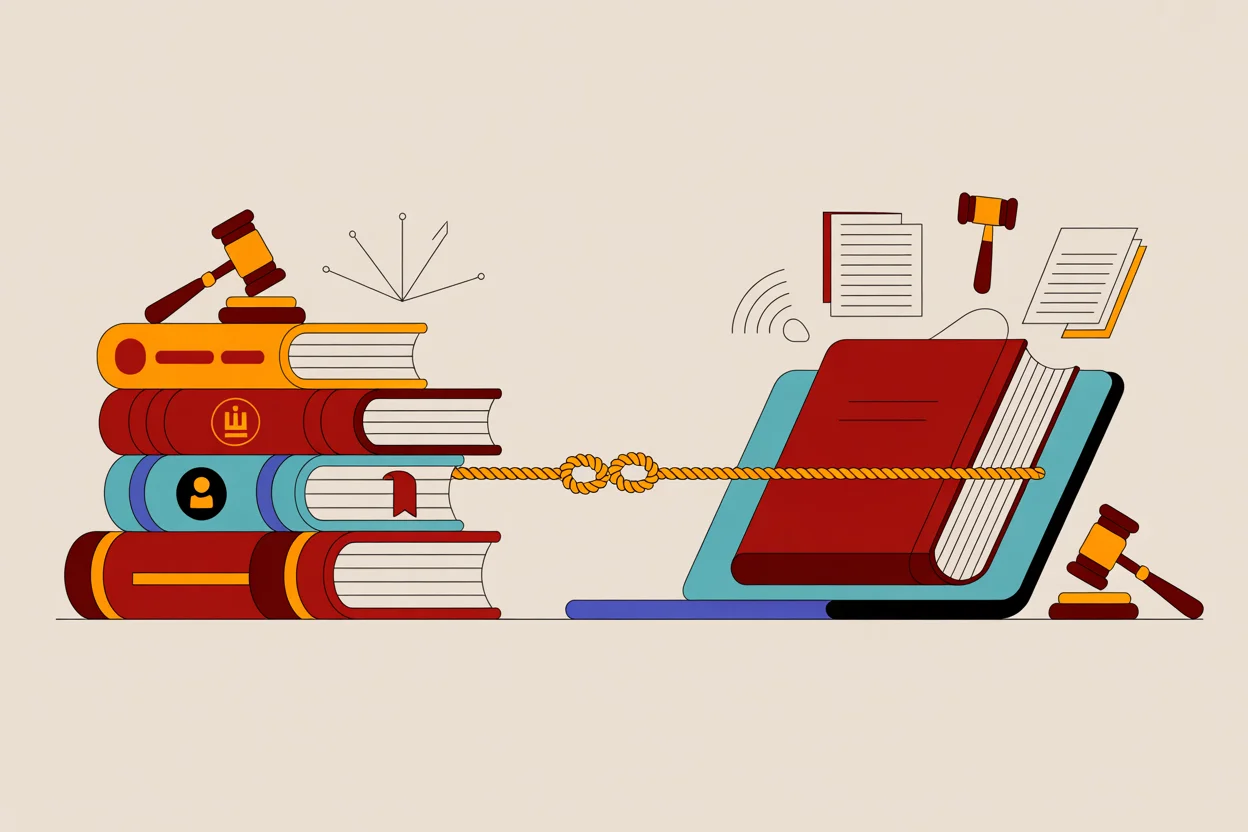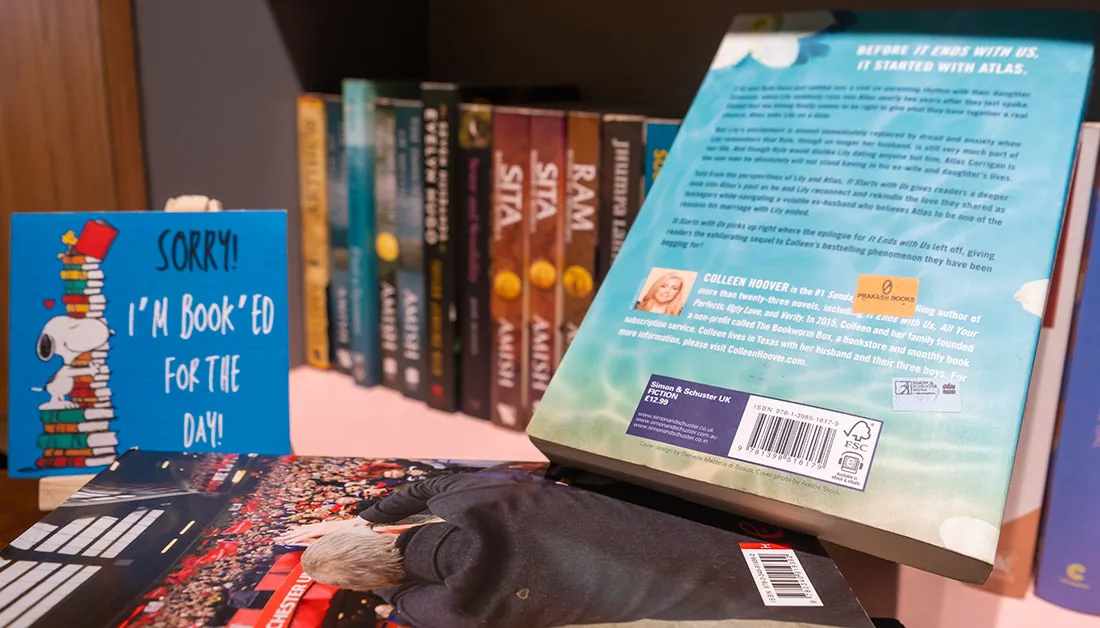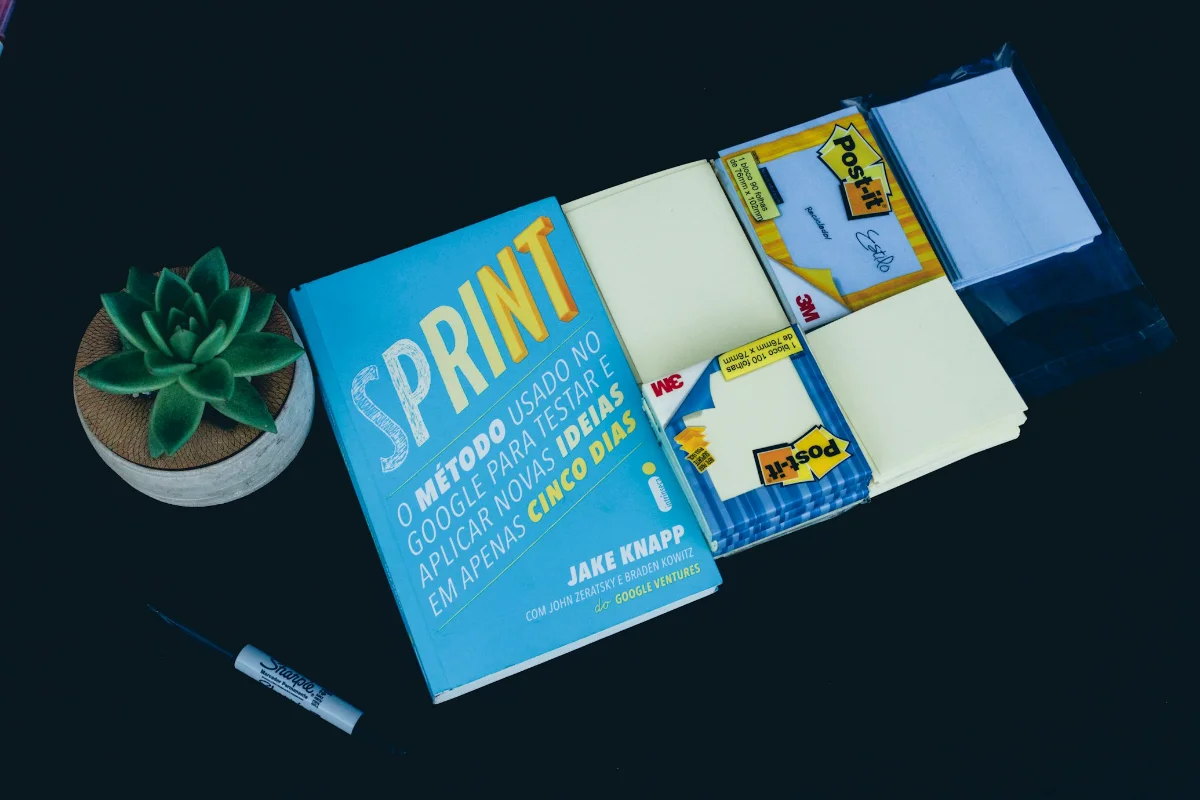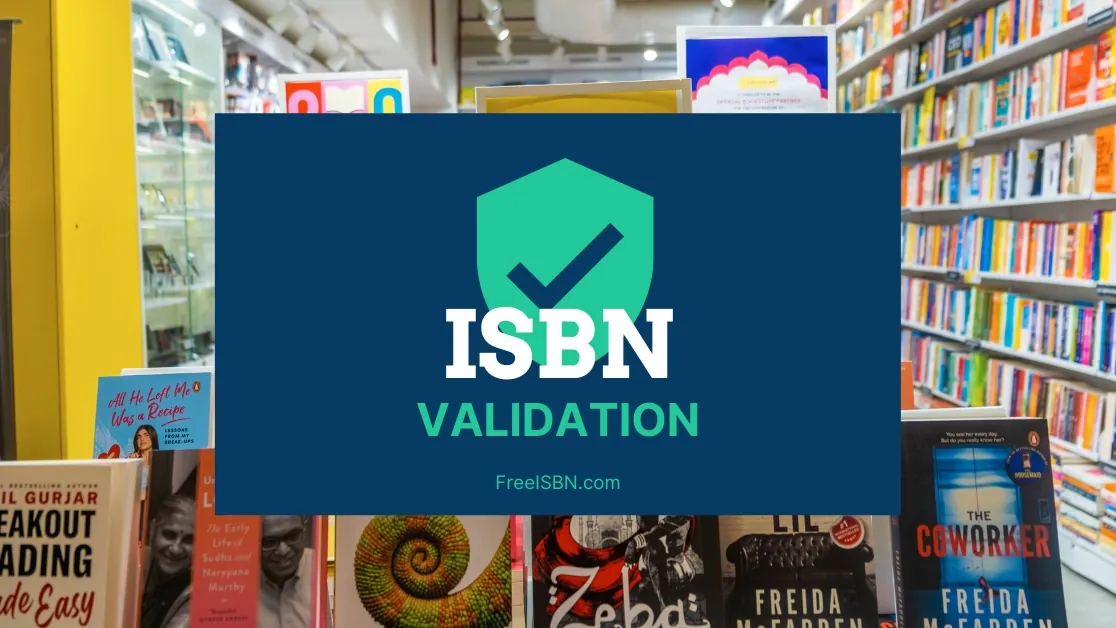
Digital Lending Battle: Internet Archive's Book Service Challenges Traditional Publishing Rights
The battle over digital book lending is heating up, with a major lawsuit challenging the Internet Archive's Controlled Digital Lending (CDL) model. We dive deep into the arguments, exploring the clash between publishers, authors, and the mission to provide universal book access. Is CDL a threat to copyright, or a vital tool for education and research? Discover the complex legal and ethical questions at the heart of this debate.
The publishing industry faces a new chapter in digital rights controversy. This follows a decade-long legal battle over Google’s book digitization efforts and the emergence of Controlled Digital Lending (CDL).
From 2004 to 2016, Google’s book digitization project, formerly “Google Book Search,” sparked intense legal debates. The tech giant defended its digitization efforts as a search service for printed works. Both the US Authors Guild and the Association of American Publishers filed copyright violation lawsuits against Google. The courts ultimately ruled in 2016 that digitization for indexing qualifies as fair use, provided only small text portions appear as context-specific snippets.
Now, a new controversy emerges: the legitimacy of digital book lending. The Internet Archive pioneered this concept through Controlled Digital Lending. Their Open Library platform has successfully provided digital access to public domain books for over ten years. CDL specifically targets copyrighted works.
The CDL system operates on a strict one-to-one model. The Internet Archive maintains physical copies of books while offering digital versions for two-week lending periods. Only one user can borrow a digital copy at a time. Multiple physical copies allow for multiple simultaneous digital loans.
Several libraries have joined this digital lending initiative. Partner libraries must carefully manage their inventory, removing physical books from circulation during digital loans. The Internet Archive, however, keeps its physical copies in storage.
Despite CDL’s controlled lending approach, authors and publishers have voiced strong opposition. The debate intensified in March 2020 when the Internet Archive launched its National Emergency Library. This temporary program, responding to COVID-19 library closures, suspended the one-to-one lending restriction. The service reverted to its original model in June 2020, but not before drawing legal action. Four major publishers - Hachette, HarperCollins, Penguin Random House, and Wiley - filed suit in New York’s Southern District Court.
The CDL controversy, like its predecessor Google Books, raises fundamental questions about digital versus physical media. These debates extend beyond legal considerations to explore modern reading habits and book accessibility. While the ongoing lawsuit addresses legal concerns, broader questions about the future of reading in the digital age remain unanswered.
Market Realities
Major stakeholders in the digital lending controversy present compelling arguments for their positions. Publishers emphasize author protection in their lawsuit. According to Authors’ Guild data, full-time authors earn an average of less than $20,000 annually - a poverty-level income. This figure may overstate typical earnings, as it includes bestselling authors’ revenues.
The Internet Archive defends its mission of universal book access. Their collection holds unique value, containing works from major research libraries digitized during the Google Books project. Many of these texts remain unavailable in public libraries.
However, the debate suffers from overgeneralization. Not all authors share the same concerns about digital lending. During the Google Books lawsuits, academic authors, who derive prestige rather than significant income from publications, expressed little concern over digitization.
The current lawsuit focuses primarily on commercial authors. The cited works include popular writers like James Patterson, J.D. Salinger, Malcolm Gladwell, and Toni Morrison. These authors generate substantial publisher revenue through in-print, commercially available books. The lawsuit notably excludes out-of-print works and academic publications.
The Internet Archive maintains its educational mission. They argue that commercial services like Overdrive and Hoopla offer limited access to libraries’ full collections. During crisis-related closures, this restricted access becomes particularly problematic.
Yet the lawsuit highlights a crucial distinction. While the Archive claims to provide access to otherwise unavailable materials, they also digitize current bestsellers. These books often have publisher-authorized digital versions. This creates a fundamental disconnect: publishers object to the lending of popular, commercially available titles, while the Archive defends its role in preserving and sharing hard-to-access materials.
The conflict essentially compares “apples to oranges” - commercial publishing interests versus digital preservation and access goals. This fundamental difference in focus complicates the legal and ethical debate surrounding digital lending practices.
Legal Framework
The publishers’ lawsuit against Internet Archive centers on specific copyright violations. Their complaint targets the systematic digitization and distribution of copyrighted books, not occasional or permitted uses.
Digital copyright law presents unique challenges. Previous legal discussions have generally rejected first sale rights for digital items. Copyright holders argue that digital transfers inherently create copies, preventing traditional first sale rights. While some platforms like Kindle offer limited lending options, these operate under specific publisher agreements rather than first sale doctrine.
Library copying rights under Copyright Law Section 108 provide limited protection. Libraries can make single copies under three conditions: non-commercial use, public accessibility, and inclusion of copyright notices. However, key restrictions apply. Copying is permitted only for preservation, security, or replacing deteriorating materials that cannot be purchased. The Internet Archive’s lending program may not meet these specific requirements.
The Archive does provide an additional service: DAISY format downloads for certified visually impaired users. This falls under Copyright Law Title 17, Section 121A, which permits accessible format distribution. While this might partially justify the scanning of copyrighted works, it doesn’t address concerns about public lending. The service’s effectiveness remains unclear, as the optical character recognition (OCR) process often produces imperfect text conversions.
These legal complexities highlight the gap between traditional copyright law and emerging digital lending practices. The case challenges courts to interpret existing statutes in the context of new technological capabilities and access models.
Digital Lending Practices
The lawsuit’s language carefully avoids the term “lending.” Instead, it emphasizes “downloads” and “distribution,” suggesting permanent file transfers. The complaint states users can download complete digital copies with minimal effort.
The publishing industry’s digital journey shows careful progression. Publishers initially resisted ebooks until Digital Rights Management (DRM) provided security. Library lending followed later. Overdrive, the primary library ebook platform, earned publisher trust through collaboration. The lawsuit questions Internet Archive’s security measures, expressing concerns about stored works’ protection.
The legal challenge extends beyond lending technology. The core issue centers on unauthorized copying before lending. Unlike libraries that purchase or license digital content, the Archive digitized books without publisher permission. Traditional libraries pay significant fees for ebook lending rights.
Financial Aspects
The lawsuit scrutinizes Internet Archive’s financial structure. Publishers characterize the Archive’s revenue as “raking in money” from “infringing services.” They challenge its non-profit status, describing it as “highly commercial” with substantial annual revenues.
These financial arguments target Copyright Law Section 108(a)(1), which permits copying only without “direct or indirect commercial advantage.” The lawsuit highlights the Archive’s scanning service income, donations, and founder Brewster Kahle’s family foundation assets exceeding $100 million.
Legal experts note the complexity of non-profit revenue interpretation. Non-profit status allows income generation but requires reinvestment in organizational activities rather than profit distribution. The Archive’s free lending model may strengthen its defense. However, the lawsuit argues that enhanced reputation from book scanning could increase donations.
The suit specifically questions the Archive’s “sponsor a book” program, comparing it to traditional non-profit fundraising tactics. Proving direct correlation between free material access and organizational income presents significant legal challenges.
Digital Access Spark Legal Debate
Digital reading platforms have evolved significantly over time. Former service Questia, which operated until December 2020, marketed itself as “research, not reading.” Google employed similar logic for its book scanning project. Courts ultimately ruled Google’s scanning as fair use, citing its transformative nature and limited text access.
Internet Archive takes a fundamentally different approach. The organization actively promotes reading access. They developed specialized in-browser reading software for online book access, beginning with public domain works and later expanding to copyrighted materials.
This strategy creates legal vulnerability. While Google successfully defended its scanning project by limiting text access, the Archive’s reading-focused approach eliminates this defense. Publishers emphasize this in their lawsuit, stating both parties distribute books for the same purpose: reading.
Usage data reveals complex patterns. The Archive reports most borrowed books see less than 30 minutes of use. The Center for Democracy and Technology suggests this indicates research and fact-checking rather than complete reading. These varied usage patterns complicate legal classification of the service.
Quality concerns add another dimension. The Archive’s scanned copies often show lower quality than publisher originals. However, legal precedent from the Kinko’s copying case suggests quality differences may not protect against copyright infringement claims. The publishers argue the Archive directly competes with their products through unauthorized copies, regardless of quality differences.
The case highlights tensions between digital preservation, access rights, and copyright protection. Different usage patterns and quality levels further complicate the legal evaluation of digital lending practices.
Digital Rights Management
Publishers have successfully monetized digital books through technological controls and licensing models. This strategy sidesteps traditional First Sale doctrine. Digital transfers create copies, falling under copyright law’s purview rather than ownership rights.
Digital licensing restricts user privileges traditionally protected by Title 17 section 109. Even with technology capable of secure file transfers, users cannot freely share, lend, or resell licensed content. Digital Rights Management (DRM) extends publisher control beyond copyright law, limiting format choices, device compatibility, and basic functions like text-to-speech or clipboard copying.
Publisher-Library Relations

Publishers claim a balanced partnership with libraries. The lawsuit portrays libraries as allies in promoting reading access, particularly for economically disadvantaged readers. However, this relationship faces challenges.
Libraries encounter strict digital lending terms. Publishers charge premium prices for ebook licenses and impose loan limits. Some industry voices actively oppose library ebook lending, citing revenue concerns. Macmillan Publishers reports 45% of ebook reads occur through libraries, raising concerns about declining sales and author earnings.
The digital marketplace continues evolving. Ebook sales rise while print sales decline. Internet Archive’s Controlled Digital Lending program directly challenges publishers’ digital revenue models. The convenience of digital borrowing particularly concerns publishers, echoing similar disruptions in music and film industries.
The Archive’s service extends beyond traditional library replacement. Many users lack physical access to academic library collections. The platform provides worldwide Internet access to digitized materials. This expanded access particularly benefits educators and researchers, though it conflicts with commercial publishing interests.
Industry observers note this conflict represents a fundamental clash between digital access advocates and traditional publishing business models. The resolution may reshape future digital content distribution and access rights.
Digital Lending Impact
Critical data about Internet Archive’s book collection usage remains unclear. The publishers’ lawsuit cites “view” statistics as evidence of infringement, but lacks clear definition of these metrics. Archive page views may include metadata record access. Open Library statistics rely on user-reported reading status. The 127 books cited in the lawsuit have been removed from lending and relabeled as “litigation works.”
Usage statistics could significantly impact the legal proceedings. While raw numbers may not determine CDL’s legality, concrete data about educational and research applications could strengthen fair use arguments. Current evidence relies primarily on limited testimonials rather than comprehensive usage analysis.
Additional Questions
Technical aspects of digital lending face separate scrutiny. The National Writers Union’s analysis highlights potential security concerns with the Archive’s web-based reader system. Their report suggests browser cache retention of viewed pages, though independent verification proves challenging. Traditional secure content platforms typically avoid browser-based solutions.
Industry experts emphasize the importance of separating distinct technical and legal issues:
- Initial digitization of copyrighted materials
- One-to-one lending ratio between physical and digital copies
- Technical implementation security
The Archive’s page-level API access presents additional legal considerations. This feature may qualify for fair use protection independently of the underlying copying issues.
Legal observers note that technical implementation challenges should not overshadow core legal questions about digital lending rights. The case requires careful examination of each component separately to fully understand the implications for future digital library services.

Lisa Millas
Freelance Writer & Editor
Lisa Millas is a freelance writer and editor specializing in the self-publishing niche.
More posts by Lisa Millas

